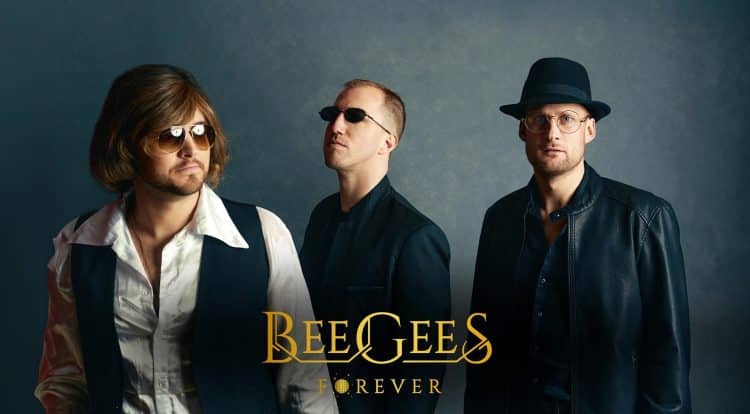The Bee Gees, a trio of brothers whose harmonies defined the sound of disco and pop in the late 20th century, continue to enchant music lovers around the globe. With their unique blend of soaring falsettos and heartfelt lyrics, they crafted timeless hits that resonate across generations. From their early beginnings in the 1960s, when they dominated the charts with soft rock ballads, to their explosive success during the disco era, the Bee Gees’ influence is undeniable. Songs like “Stayin’ Alive” and “How Deep Is Your Love” not only topped charts but also became anthems of a cultural revolution.
In this article, we’ll take you on a nostalgic journey through the top 10 most popular Bee Gees songs of all time. Each track is a testament to their incredible songwriting prowess and vocal talent, showcasing why they remain a beloved staple in the music industry. Whether you’re a lifelong fan or a newcomer eager to explore their discography, prepare to be captivated by the melodies and stories that have made the Bee Gees legendary. Let’s dive into the sounds that have made hearts dance and spirits soar for decades!
1. Stayin’ Alive (1977)

“Stayin’ Alive” isn’t just a song; it’s a rallying cry of determination and perseverance. Featured on the Saturday Night Fever soundtrack, this track became the heartbeat of the disco era, with its pulsating bassline and instantly recognizable beat. The lyrics delve into the struggles of everyday life, capturing the tenacity required to keep going in the face of adversity. It’s a powerful anthem of survival, reflecting a world where challenges are constant, yet the human spirit endures.
The Bee Gees’ iconic falsettos add an electrifying energy to the track, their harmonies weaving seamlessly into the infectious rhythm. The blend of funk, disco, and pop elements creates a sound that’s both timeless and era-defining. It’s no wonder that “Stayin’ Alive” has become synonymous with resilience, even finding a place in first aid training for its perfect tempo for CPR.
Beyond its musical brilliance, the song’s cultural impact is immense. From its use in countless movies and TV shows to its enduring popularity on dance floors, “Stayin’ Alive” is a testament to the Bee Gees’ genius and their ability to craft music that resonates across generations. It’s more than a disco hit; it’s a declaration that no matter what life throws your way, you have the strength to push forward.
2. How Deep Is Your Love (1977)

“How Deep Is Your Love” is a tender masterpiece that captures the profound vulnerability of romantic connection. Featured in the Saturday Night Fever soundtrack, the song became a timeless classic, showcasing the Bee Gees’ remarkable ability to balance heartfelt emotion with exquisite musicality.
The track opens with a gentle, soothing melody that immediately sets an intimate tone. Barry Gibb’s lead vocals, supported by the harmonious backing of Robin and Maurice, evoke a sense of warmth and sincerity. The lyrics explore the depth of love and commitment, posing questions that resonate universally: How far would you go for love? How deeply can you feel for someone? These themes, paired with the song’s smooth arrangement, create a timeless ballad that continues to tug at heartstrings.
The instrumentation is subtle yet rich, with soft strings and delicate keyboard flourishes complementing the vocals. It’s this combination of simplicity and sophistication that makes the song so enduring. “How Deep Is Your Love” transcends the disco label, appealing to audiences far beyond the dance floors of the 1970s.
Winning a Grammy for Best Pop Vocal Performance by a Group, the song solidified the Bee Gees’ place not just as disco icons but as masterful songwriters capable of crafting emotionally resonant music. Its legacy endures, reminding listeners of the beauty and complexity of love.
3. Night Fever (1977)

“Night Fever” is the epitome of disco’s vibrant allure and the exhilarating spirit of the nightlife. Written for the Saturday Night Fever soundtrack, the song captures the pulsating energy of dance floors filled with lights, movement, and uncontainable joy.
From the opening bars, the track establishes its groove with a hypnotic rhythm driven by a funky bassline and syncopated strings. The Bee Gees’ harmonies, layered with their signature falsetto, create a dynamic soundscape that perfectly mirrors the excitement of a night out. The lyrics are a celebration of the euphoric freedom found in music and dancing, making “Night Fever” an anthem for anyone who’s ever been swept away by the magic of the disco era.
The song’s structure is a masterclass in musical craftsmanship. Each section flows seamlessly into the next, building momentum and sustaining the high-energy vibe that defines the track. The infectious chorus ensures it stays lodged in your mind, urging you to move with the rhythm.
Commercially, “Night Fever” was a massive success, topping charts worldwide and cementing the Bee Gees’ status as disco legends. It became a cultural phenomenon, synonymous with the glitz and glamour of the 1970s dance scene. Decades later, the track still brings listeners to their feet, a testament to its timeless appeal and the enduring legacy of the Bee Gees.
4. Jive Talkin’ (1975)

“Jive Talkin’” represents a turning point in the Bee Gees’ career, marking their transition into a funkier, more contemporary sound that paved the way for their dominance in the disco era. Released as the lead single from their album Main Course, the song introduced a fresh energy and innovative approach that redefined their musical identity.
The track’s infectious groove is anchored by a syncopated rhythm that mimics the sound of a car driving over a bridge, a creative production choice that adds a unique texture. The playful lyrics capture the essence of casual conversations and lively banter, giving the song a fun, lighthearted feel. The chorus, with its irresistible hook, showcases the Bee Gees’ knack for crafting melodies that stay with you long after the song ends.
Barry Gibb’s falsetto soars effortlessly over the funky bassline and dynamic instrumentation, while Robin and Maurice provide impeccable harmonies that enrich the sound. The combination of their vocal prowess and the innovative arrangement made “Jive Talkin’” an instant hit, reaching the top of the charts and becoming a staple on dance floors.
Critically acclaimed and commercially successful, the song marked the Bee Gees’ successful reinvention as disco icons. Its influence extended beyond its release, inspiring a new wave of funk and disco-infused music. Decades later, “Jive Talkin’” remains a vibrant and exciting reminder of the Bee Gees’ ability to adapt and innovate while staying true to their roots.
5. More Than a Woman (1977)

“More Than a Woman” is a stunning showcase of the Bee Gees’ ability to blend romance and melody into a seamless masterpiece. Featured prominently on the Saturday Night Fever soundtrack, this song became a symbol of love and connection, celebrated for its tender lyrics and enchanting arrangement.
The track’s smooth, mid-tempo rhythm creates a dreamy atmosphere, perfectly complementing the heartfelt lyrics that explore a love so deep it transcends the ordinary. The Bee Gees’ harmonies are flawless, weaving together in a way that elevates the song’s emotional impact. Each note and phrase is carefully crafted, reflecting the group’s dedication to creating music that resonates with listeners on a profound level.
“More Than a Woman” stands out not only for its romantic essence but also for its intricate composition. The blend of disco rhythms and melodic softness gives it a unique quality that appeals to fans of all genres. The song’s enduring popularity is a testament to its universal appeal, as it continues to be a favorite for weddings, anniversaries, and other celebrations of love.
Although the Bee Gees’ version is iconic, its widespread influence led to memorable covers by other artists, such as Tavares, further cementing its legacy. “More Than a Woman” remains a timeless testament to the Bee Gees’ unparalleled talent for creating music that captures the complexities of human emotion with grace and beauty.
6. To Love Somebody (1967)

“To Love Somebody” is one of the Bee Gees’ most enduring ballads, a soulful exploration of longing and unrequited love. Written by Barry and Robin Gibb, the song was originally intended for Otis Redding, which explains its deeply emotional and bluesy undertones. Though Redding never recorded it, the Bee Gees’ own rendition became a classic, showcasing their talent for crafting songs that resonate universally.
The lyrics are a poignant reflection on love that isn’t reciprocated, capturing the ache of yearning with poetic simplicity. Lines like “You don’t know what it’s like to love somebody the way I love you” strike a chord with anyone who has experienced the pain of one-sided affection. Barry Gibb’s heartfelt delivery amplifies the emotion, his voice soaring with vulnerability and passion.
Musically, the track is a masterpiece of subtlety and elegance. The lush string arrangement and gentle guitar strumming create a soft, melancholic backdrop that allows the vocals to take center stage. It’s a song that feels timeless, transcending the era in which it was written.
Over the years, “To Love Somebody” has been covered by countless artists, from Nina Simone to Michael Bolton, each bringing their unique interpretation to its heartfelt message. This widespread appeal speaks to the universality of the song’s themes and the Bee Gees’ remarkable songwriting prowess. It remains a powerful testament to their ability to connect with listeners on an emotional level, making it one of their most beloved works.
7. Massachusetts (1967)

“Massachusetts” is a beautifully evocative song that showcases the Bee Gees’ early mastery of storytelling through music. Written during a visit to the United States, the track captures a sense of nostalgia and longing for home, painting vivid images of a simpler, quieter life. Released as a single from their album Horizontal, it became their first number-one hit in the UK and remains a standout in their discography.
The song begins with a gentle, almost hymn-like melody that sets a contemplative tone. The lyrics tell the story of someone yearning to return to Massachusetts after experiencing the chaos and allure of the big city. The Bee Gees’ harmonies are exquisite, blending seamlessly to convey the bittersweet emotion of the narrative. Barry Gibb’s lead vocals carry a sense of sincerity and warmth, drawing listeners into the story.
The arrangement is understated yet rich, with soft acoustic guitars and subtle orchestration that enhance the song’s reflective mood. This simplicity allows the poignant lyrics and heartfelt delivery to shine, making “Massachusetts” a deeply moving experience.
The song’s success marked a turning point for the Bee Gees, solidifying their status as international stars. Its timeless appeal lies in its universal themes of longing and the pull of home, resonating with listeners across generations. “Massachusetts” remains a cherished classic, a testament to the Bee Gees’ ability to create music that touches the heart and stirs the soul.
8. I Started a Joke (1968)

“I Started a Joke” is one of the Bee Gees’ most hauntingly beautiful songs, a poignant reflection on regret, sorrow, and the unintended consequences of one’s actions. Featured on their album Idea, the track stands out as a deeply introspective ballad that showcases Robin Gibb’s ethereal vocals and the group’s unparalleled ability to convey raw emotion.
The lyrics tell the story of someone whose actions, intended to bring joy, inadvertently lead to despair. Lines like “I started a joke, which started the whole world crying” carry a sense of irony and melancholy that resonates universally. Robin’s quivering, emotive voice gives the song an almost otherworldly quality, drawing listeners into its somber narrative.
The arrangement is minimalist yet impactful, with a gentle piano and understated strings providing a hauntingly atmospheric backdrop. The simplicity of the instrumentation allows the lyrics and vocals to take center stage, enhancing the song’s emotional weight.
“I Started a Joke” became one of the Bee Gees’ most beloved tracks, admired for its depth and vulnerability. Its timeless appeal has led to numerous covers by artists ranging from Faith No More to Brandon Flowers, each interpreting the song’s poignant themes in their own way.
Even decades after its release, “I Started a Joke” remains a testament to the Bee Gees’ brilliance as songwriters and performers. It captures the human experience in all its complexity, blending sorrow with beauty in a way that few songs can.
9. Tragedy (1979)

“Tragedy” is a powerful and theatrical masterpiece that captures the drama and intensity of heartbreak. Released as part of the Bee Gees’ iconic album Spirits Having Flown, the song showcases their ability to merge emotional depth with a dynamic, high-energy sound.
The track opens with a dramatic explosion of synthesizers and percussion, setting a foreboding tone that mirrors the anguish expressed in the lyrics. The Bee Gees’ signature falsettos shine throughout, with Barry Gibb leading the vocals in a performance that exudes urgency and despair. Lines like “Tragedy, when the feeling’s gone and you can’t go on” convey the overwhelming pain of loss, resonating with anyone who has experienced heartache.
Musically, “Tragedy” is a tour de force, blending elements of disco, rock, and pop into a seamless and electrifying composition. The driving rhythm and pulsating bassline create an intensity that builds throughout the song, culminating in a climactic finale that leaves listeners breathless.
The song was a massive commercial success, reaching number one on charts worldwide and solidifying the Bee Gees’ status as musical legends. Its enduring appeal lies in its ability to capture raw emotion with such theatrical flair, making it a standout in their extensive catalog.
“Tragedy” remains a defining example of the Bee Gees’ genius, a track that continues to captivate audiences with its emotional depth and powerful delivery. It’s a timeless classic that showcases their unparalleled artistry.
10. You Should Be Dancing (1976)

“You Should Be Dancing” is the ultimate disco anthem, a high-energy track that epitomizes the vibrant spirit of the 1970s dance scene. Released as a single from their album Children of the World, the song quickly became a global sensation, dominating dance floors and charts alike.
From the opening beats, “You Should Be Dancing” commands attention with its infectious groove and relentless rhythm. The funky bassline, sharp guitar riffs, and dynamic percussion create an irresistible backdrop that gets people moving. The Bee Gees’ signature falsettos take center stage, delivering the playful lyrics with charisma and style.
The song’s upbeat message celebrates the joy of dancing and letting loose, making it a perfect soundtrack for nights filled with fun and freedom. Lines like “What you doin’ on your back?” invite listeners to join in the revelry, capturing the carefree essence of the disco era.
Beyond its commercial success, the track became a cultural phenomenon, featured prominently in the movie Saturday Night Fever. Its inclusion in the film solidified its place as one of the defining songs of the disco movement and introduced the Bee Gees to an even wider audience.
Decades later, “You Should Be Dancing” remains a timeless classic, its electrifying energy undiminished by time. It’s a testament to the Bee Gees’ ability to create music that transcends generations, bringing people together on the dance floor to celebrate life and music.









